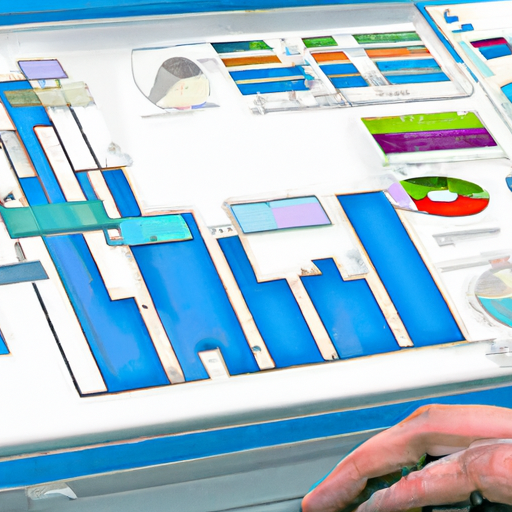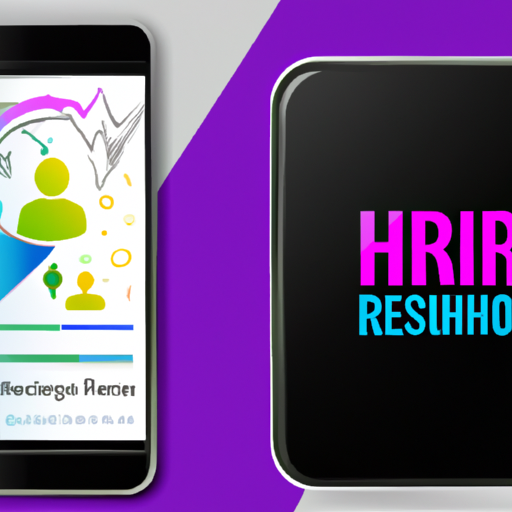Saas Industry Trends
Saas Industry Trends takes a closer look at the latest developments and emerging patterns within the Software as a Service (SaaS) industry. From the rapid expansion of cloud-based solutions to the increasing demand for flexible and scalable software, this in-depth exploration unveils the most significant trends shaping the future of the Saas market. Whether you’re a business owner, tech enthusiast, or simply curious about the advancements in the digital realm, this article provides valuable insights into the Saas industry’s ever-evolving landscape.

Table of Contents
Emerging Technologies
Artificial Intelligence
Artificial Intelligence (AI) has emerged as a transformative technology in the SaaS industry. AI-powered software can analyze large volumes of data, identify patterns, and make intelligent predictions and recommendations. With AI, SaaS companies can provide personalized experiences to their clients, automate processes, and optimize decision-making. For example, customer service chatbots powered by AI can assist users in real-time, reducing the need for human intervention.
Machine Learning
Machine Learning (ML) is a subset of AI that involves training algorithms to learn from and make predictions or take actions based on data. SaaS companies are leveraging ML to enhance their offerings in various ways. For example, ML algorithms can be used to analyze user behavior and preferences, leading to more accurate product recommendations. Additionally, ML can be utilized for predictive maintenance, fraud detection, and other data-driven tasks.
Internet of Things
The Internet of Things (IoT) refers to the network of physical devices embedded with sensors, software, and connectivity, enabling them to collect and exchange data. In the SaaS industry, the integration of IoT devices with cloud-based platforms allows for the seamless monitoring, control, and management of various systems. This integration opens up opportunities for SaaS providers to offer innovative solutions in areas such as smart homes, industrial automation, and asset tracking.
Blockchain
Blockchain technology has gained significant attention beyond its association with cryptocurrencies. In the SaaS industry, blockchain offers decentralized and transparent solutions for secure and trustworthy transactions and data management. Implementing blockchain enables SaaS companies to enhance data security, strengthen trust between users, and streamline processes such as supply chain management and contract verification.
Changing Business Models
From On-Premise to Cloud-Based
The shift from traditional on-premise software to cloud-based SaaS models has revolutionized the way businesses operate. Cloud-based SaaS solutions offer numerous benefits such as scalability, cost-effectiveness, and ease of access from multiple devices. This business model eliminates the need for costly hardware infrastructure and enables seamless updates and maintenance. Companies can now focus more on their core competencies instead of spending resources on managing software infrastructure.
Freemium Model
The freemium model has gained popularity in the SaaS industry, allowing companies to provide basic services for free while charging for premium features and enhanced functionality. This approach helps SaaS providers attract a larger user base, create brand awareness, and drive user engagement. By offering a free trial or tiered pricing plans, SaaS companies can cater to diverse customer segments and increase their customer acquisition and retention rates.
Vertical SaaS
Vertical SaaS refers to industry-specific software solutions that cater to the unique needs and requirements of particular sectors. By focusing on a specific industry, SaaS companies can provide tailored functionalities and features that address industry-specific challenges. This specialization ensures that businesses can maximize the value and efficiency of the software, leading to increased customer satisfaction and loyalty.
Microservices Architecture
Microservices architecture is an architectural style where complex applications are composed of small, loosely coupled services that can be developed, deployed, and scaled independently. This approach allows SaaS companies to break down their applications into smaller, manageable components, facilitating faster development cycles and easier maintenance. Microservices enable scalability, fault isolation, and greater flexibility in adapting to evolving business requirements.
Increasing Adoption
Small and Medium-sized Enterprises (SMEs)
SMEs are increasingly adopting SaaS solutions as they offer cost-effective and scalable alternatives to traditional software. With SaaS, SMEs can access advanced functionalities and tools without significant upfront costs. Additionally, cloud-based SaaS platforms provide SMEs with the flexibility to scale their operations as their businesses grow, making them an attractive option for startups and emerging businesses looking to maximize their resources and efficiency.
Large Enterprises
Large enterprises are also rapidly adopting SaaS solutions to streamline their operations and drive innovation. SaaS offers scalability, agility, and faster time to market, allowing large enterprises to remain competitive in a rapidly evolving business landscape. Moreover, cloud-based SaaS platforms enable easy collaboration and integration with existing systems, making them ideal for complex organizational structures and global operations.
Government Organizations
Government organizations are recognizing the benefits of SaaS solutions in terms of cost savings, improved efficiency, and enhanced service delivery. Cloud-based SaaS platforms can support government agencies in areas such as citizen services, healthcare, and public safety. By adopting SaaS, government organizations can digitize their processes, improve data security and transparency, and provide citizens with better access to services.
Startups
Startups, with their limited resources and need for rapid growth, are increasingly turning to SaaS solutions. Using SaaS eliminates the need for extensive IT infrastructure investments and allows startups to focus on developing their core products or services. SaaS platforms offer scalability, flexibility, and reduced time to market, providing startups with the necessary tools to innovate and compete in highly dynamic markets.
Data Security and Privacy
Robust Encryption
Data security is a top priority for SaaS providers, and robust encryption techniques play a vital role in protecting sensitive information. Encryption ensures that data remains secure during transmission and storage. By implementing strong encryption algorithms, SaaS companies can safeguard user data from unauthorized access and mitigate the risk of data breaches.
Compliance with Data Protection Regulations
As data protection regulations become more stringent, SaaS companies must comply with data privacy laws, such as the European Union’s General Data Protection Regulation (GDPR). Compliance with these regulations ensures that customer data is handled responsibly and securely. SaaS providers need to implement appropriate data protection measures, obtain user consent, and provide transparency regarding data collection and usage practices.
Enhanced Authentication Measures
Authentication is crucial for ensuring the integrity and confidentiality of data in SaaS applications. SaaS providers are implementing multi-factor authentication (MFA) and biometric authentication methods to enhance security. MFA, such as combining passwords with SMS codes or fingerprint recognition, adds an extra layer of protection against unauthorized access. These measures reduce the risk of identity theft and unauthorized data manipulation.
Integration Capabilities
Seamless Integration with Existing Systems
SaaS solutions need to seamlessly integrate with existing software and systems to provide a cohesive user experience. Integration capabilities enable data exchange, synchronization, and interoperability between different applications. SaaS companies are investing in integration technologies and APIs (Application Programming Interfaces) to ensure that their platforms can connect with popular business tools and systems, such as customer relationship management (CRM) software or accounting software.
API Economy
The API economy has revolutionized the way companies integrate and collaborate. SaaS providers are offering well-documented APIs that allow developers to extend the functionality of their platforms and build custom integrations. APIs enable users to connect their SaaS applications with other software and services, creating a more holistic and efficient workflow. The API economy fosters innovation and enables businesses to tailor their SaaS solutions according to their unique requirements.
Standardized Data Formats
Standardized data formats are essential for smooth data exchange and interoperability between different systems. SaaS companies are adopting industry-standard formats, such as JSON (JavaScript Object Notation) and XML (eXtensible Markup Language), to ensure compatibility with various applications and services. Standardized data formats facilitate seamless integration and enable users to leverage data across multiple platforms without the need for complex and costly data conversions.
Interoperability
Interoperability refers to the ability of different systems and software to exchange and use information seamlessly. SaaS providers are focusing on interoperability to ensure that their platforms can work harmoniously with other applications and services. By enabling interoperability, SaaS companies enhance user experience, reduce data silos, and enable businesses to leverage the full potential of their software ecosystem. Interoperability also allows for easier data migration and reduces vendor lock-in.
Focus on User Experience
Intuitive User Interfaces
User experience is a key differentiator in the SaaS industry, and intuitive user interfaces are crucial for customer satisfaction. SaaS providers are investing in user-centric design principles to create intuitive and easy-to-use interfaces. A well-designed user interface enhances usability, reduces learning curves, and increases user adoption rates. By focusing on intuitive interfaces, SaaS companies can improve customer satisfaction and drive user engagement.
Customization Options
SaaS platforms that offer customization options allow users to tailor the software according to their specific needs and preferences. SaaS providers are incorporating features that enable users to personalize the interface, workflows, and reporting to align with their unique requirements. Customization options empower users to optimize their workflows, increase productivity, and derive maximum value from the software.
Training and Support
Effective training and support are essential for successful adoption and usage of SaaS solutions. SaaS providers are investing in comprehensive onboarding programs, user documentation, and customer support to assist users in effectively utilizing their platforms. Training programs may include video tutorials, webinars, or personalized training sessions to ensure that users are proficient in maximizing the capabilities of the software. Timely and responsive customer support is also crucial in addressing any issues or queries users may have.
Continuous Improvement
To stay competitive, SaaS providers must continuously iterate and enhance their products based on user feedback and evolving market trends. Continuous improvement processes involve releasing regular updates, bug fixes, and feature enhancements to address user needs and maintain a competitive edge. SaaS companies leverage user feedback channels, such as customer surveys, forums, and user groups, to gather insights and prioritize improvements. By embracing a culture of continuous improvement, SaaS providers can ensure that their platforms remain relevant and valuable to their users.
Mobile Accessibility
Responsive Design
Responsive design is crucial to enable seamless and consistent user experiences across different devices and screen sizes. SaaS providers are implementing responsive design principles to ensure that their applications dynamically adapt to the device being used. Responsive design optimizes the layout, content, and functionality of the application, allowing users to access and operate the software effectively regardless of the device they are using, be it mobile phones, tablets, or desktop computers.
Mobile Apps
Developing mobile apps alongside web-based platforms allows SaaS providers to provide users with a dedicated and optimized experience on mobile devices. Mobile apps offer additional features and functionalities that are tailored for on-the-go usage and mobile-specific capabilities, such as push notifications or location services. Mobile apps enhance the convenience and accessibility of SaaS solutions, enabling users to access critical information and perform tasks anytime, anywhere.
Offline Access
Offline access to SaaS applications is crucial, especially in scenarios where internet connectivity is limited or unreliable. SaaS providers are implementing offline capabilities, allowing users to access and perform certain tasks even without an internet connection. Offline access ensures productivity and continuity, enabling users to work on critical tasks or access important information during periods of limited or no connectivity. Once the internet connection is restored, changes made offline can be synchronized with the cloud.
Mobile-First Approach
A mobile-first approach entails designing and developing SaaS applications primarily for mobile devices, with desktop versions being secondary considerations. SaaS providers are prioritizing mobile experiences to align with the increasing usage of mobile devices for business purposes. By adopting a mobile-first approach, SaaS companies ensure that their applications are specifically optimized for mobile usage, offering seamless experiences, simplified workflows, and enhanced productivity for users on the go.
Scalability and Flexibility
Elasticity
Elasticity refers to the ability of SaaS solutions to dynamically adapt to changing workload demands. SaaS providers are leveraging cloud infrastructure to scale resources up or down based on real-time usage patterns. The elasticity of SaaS platforms ensures that businesses can handle fluctuations in demand without disruptions or performance issues, enabling them to scale their operations effortlessly and cost-effectively.
Pay-as-You-Go Pricing
Pay-as-You-Go (PAYG) pricing is a flexible and cost-efficient pricing model where customers only pay for the resources they use. SaaS providers are offering PAYG pricing plans that allow businesses to align their costs directly with their usage. This model eliminates the need for upfront investments and long-term commitments, making SaaS solutions more accessible and affordable to businesses of all sizes. PAYG pricing enables scalability and cost optimization, as businesses can scale their usage and costs based on their needs.
Dynamic Resource Allocation
Dynamic resource allocation involves automatically allocating and reallocating computing resources based on real-time demand. SaaS providers are utilizing intelligent resource management systems to optimize resource allocation and utilization, ensuring optimal performance and cost efficiency. Dynamic resource allocation enables businesses to have the required resources available when needed, avoiding over-provisioning and resulting in cost savings and improved scalability.
Vertical and Horizontal Scalability
Vertical scalability refers to increasing the capacity of individual resources, such as processing power or memory, to handle higher workloads. Horizontal scalability, on the other hand, involves adding more identical resources to distribute the workload. SaaS providers are designing their platforms to be vertically and horizontally scalable, allowing businesses to scale their operations based on their evolving needs. This scalability ensures that businesses can handle increased demands without compromising performance or incurring additional costs.
Industry-Specific Solutions
Healthcare
In the healthcare industry, SaaS solutions offer immense potential for streamlining processes, improving patient care, and enhancing data security. SaaS platforms designed for healthcare provide features such as electronic medical records (EMR), patient management systems, telehealth capabilities, and health data analytics. These solutions enable healthcare providers to digitize their operations, enhance collaboration, and deliver personalized care to patients.
Finance
SaaS solutions are transforming the finance industry by automating processes, improving efficiency, and ensuring compliance. SaaS platforms for finance offer features such as accounting, budgeting, financial reporting, and risk management tools. These solutions enable finance professionals to streamline financial operations, gain real-time insights, and make data-driven decisions. Additionally, SaaS solutions in finance provide robust security measures to protect financial data and ensure regulatory compliance.
Education
In the education sector, SaaS solutions offer innovative ways for institutions to enhance teaching and learning experiences. SaaS platforms designed for education provide features such as learning management systems (LMS), virtual classrooms, assessment tools, and student information systems. These solutions enable educators to deliver engaging and interactive content, personalize learning experiences, and track student progress effectively. SaaS solutions in education also facilitate collaboration and communication among students, teachers, and parents.
Retail
Retailers are utilizing SaaS solutions to transform their operations, improve customer experiences, and optimize sales. SaaS platforms for retail provide features such as inventory management, point-of-sale (POS) systems, e-commerce capabilities, and customer relationship management (CRM) tools. These solutions enable retailers to streamline inventory, provide personalized promotions, and gain insights into customer behavior. By integrating online and offline channels, SaaS solutions in retail help retailers create seamless omnichannel experiences and improve customer loyalty.
Collaboration and Communication Tools
Team Messaging
Team messaging platforms enable real-time communication and collaboration among team members. SaaS providers offer team messaging solutions that consolidate chat, file sharing, task management, and collaboration functionalities in a single platform. Team messaging enhances productivity by reducing email clutter, facilitating quick decision-making, and keeping team members connected and informed.
Video Conferencing
Video conferencing solutions have become essential for remote collaboration and virtual meetings. SaaS providers offer video conferencing platforms that enable high-quality video and audio calls, screen sharing, and collaboration features. Video conferencing solutions help teams stay connected, enhance communication, and foster closer collaboration, even when working remotely or across different locations.
Project Management
Project management tools help teams plan, organize, and execute projects effectively. SaaS providers offer project management platforms that enable task assignment, progress tracking, document sharing, and collaboration features. Project management solutions improve team coordination, increase transparency, and ensure that projects are completed on time and within budget.
File Sharing
File sharing solutions allow users to store, access, and share files securely. SaaS providers offer cloud storage and file sharing platforms that provide centralized storage, easy file access, version control, and secure sharing capabilities. File sharing solutions enhance collaboration, enable remote access to important documents, and ensure that teams can work together on files in real-time.
By embracing emerging technologies, adapting business models, enhancing data security, focusing on user experience, and providing flexible and scalable solutions, the SaaS industry continues to transform how businesses and organizations operate. The increasing adoption of SaaS by enterprises of all sizes, government organizations, and startups highlights the significant value and benefits offered by these innovative solutions. As the SaaS industry evolves, there is a growing emphasis on industry-specific solutions and collaboration and communication tools that empower businesses to thrive in an increasingly digital world.






